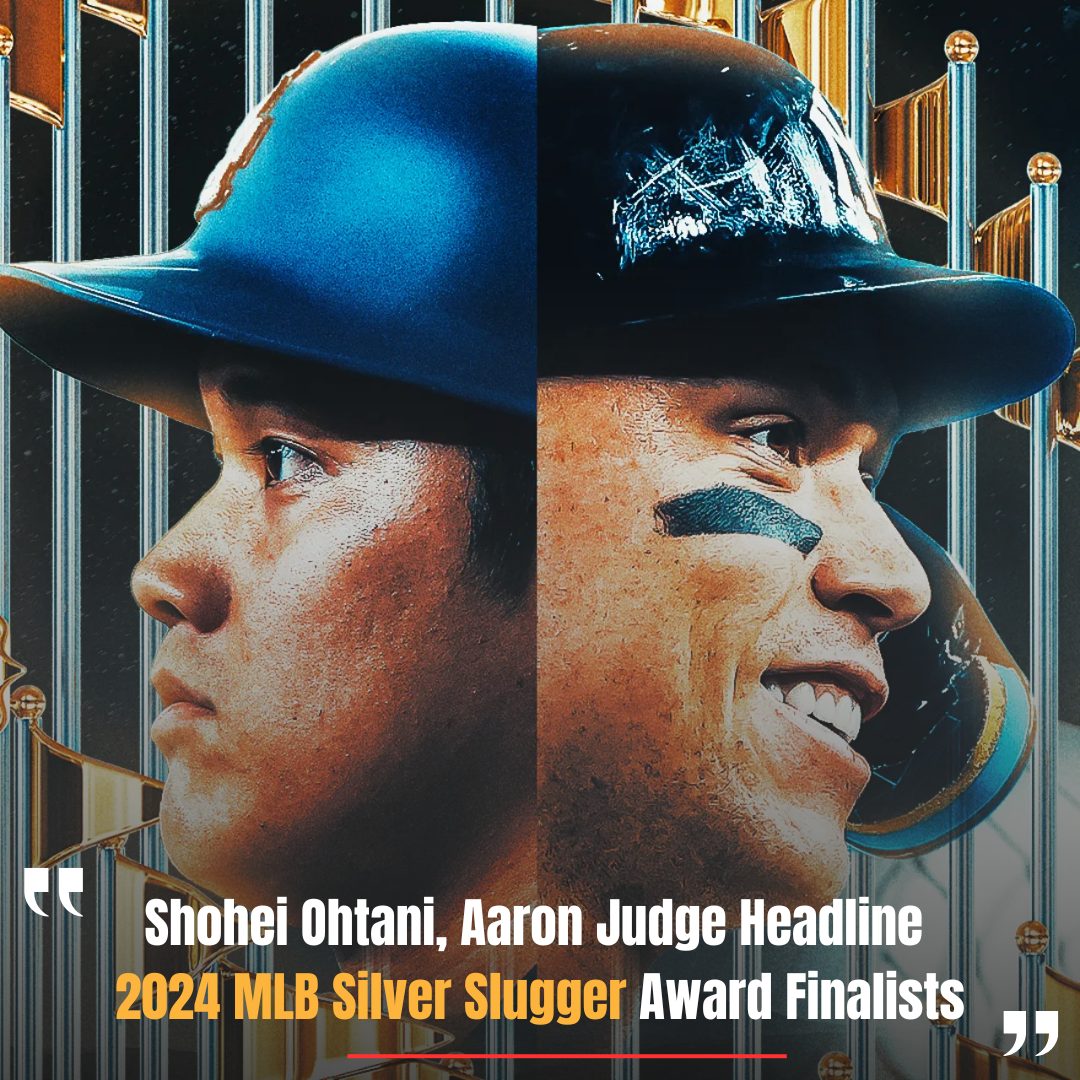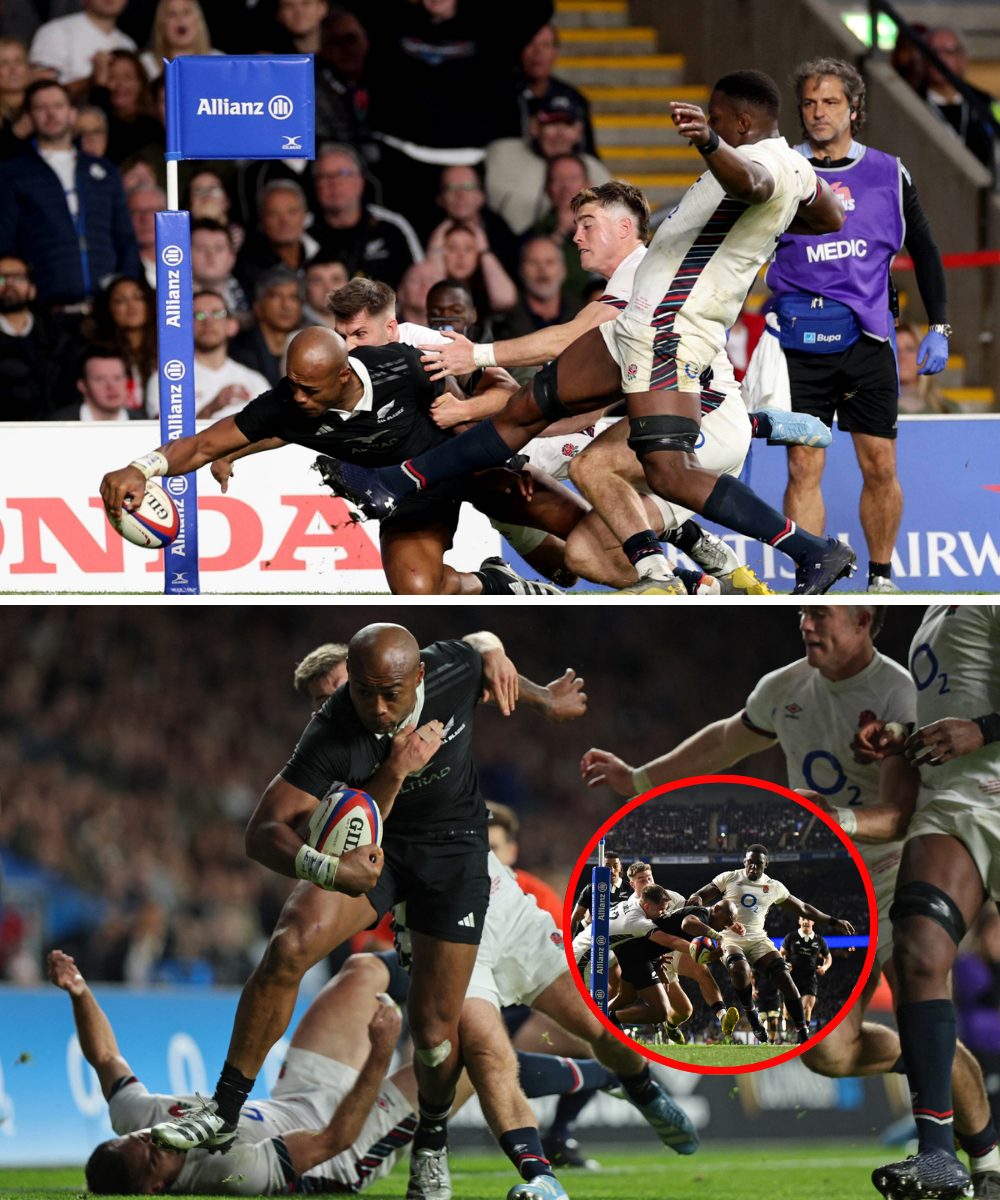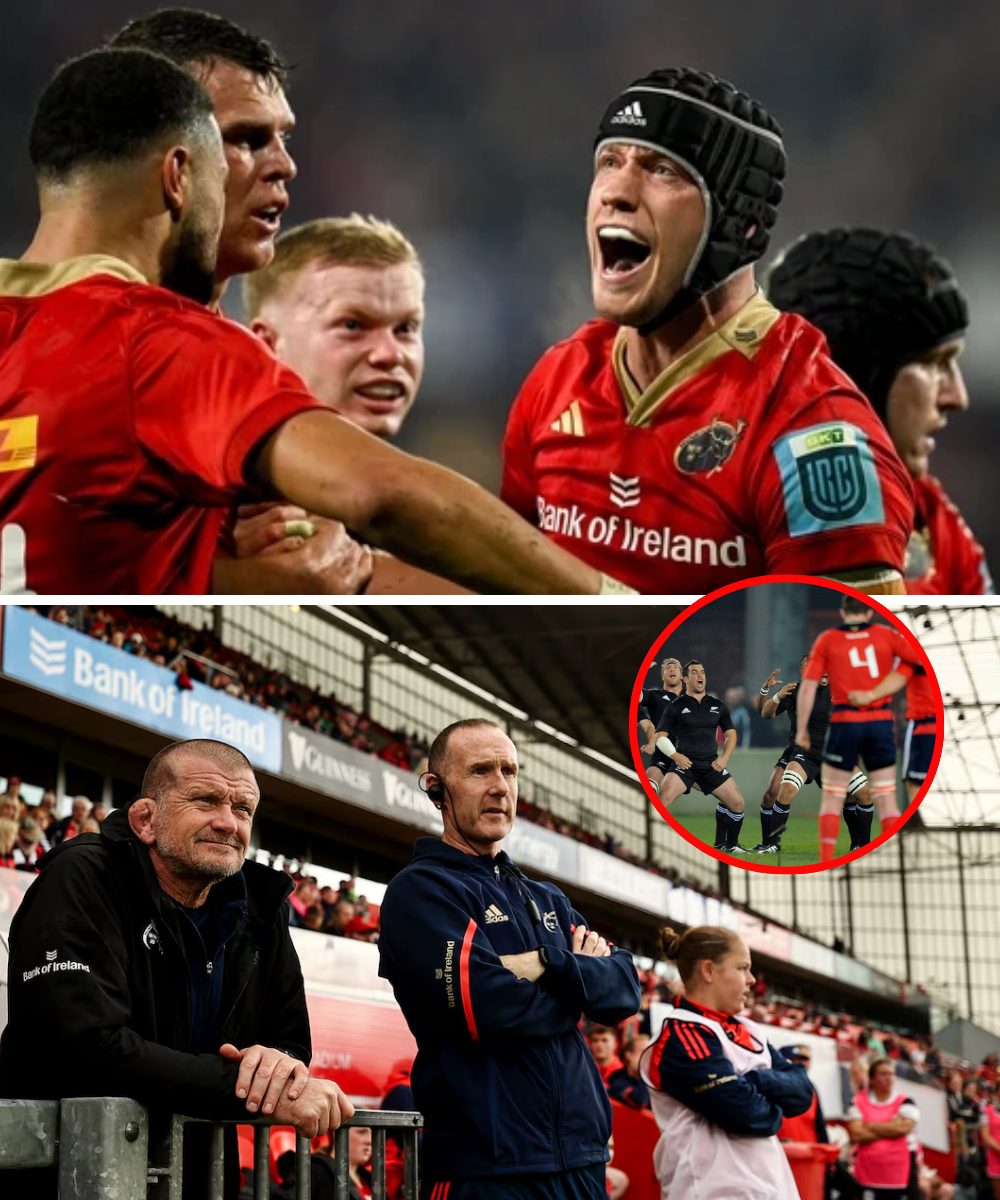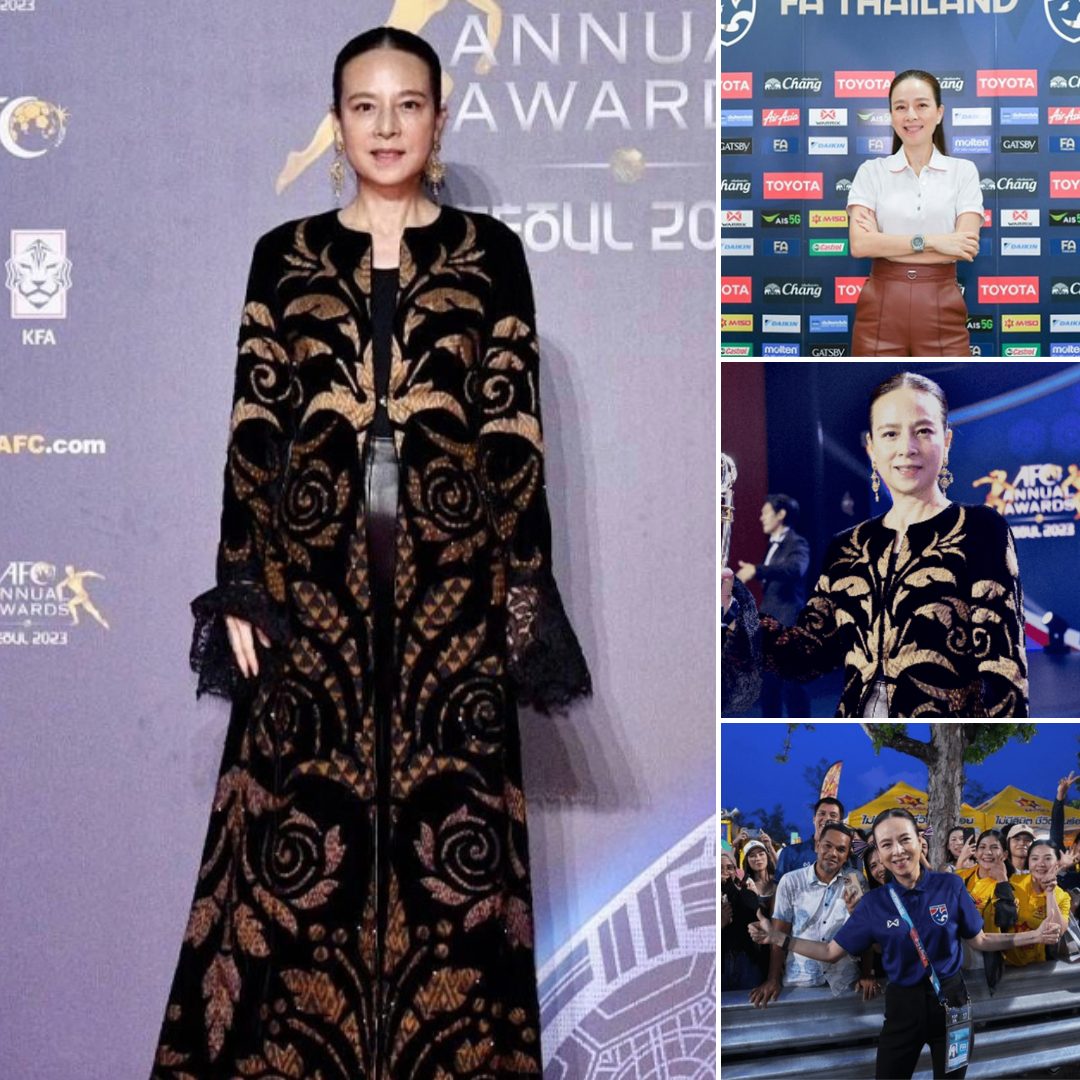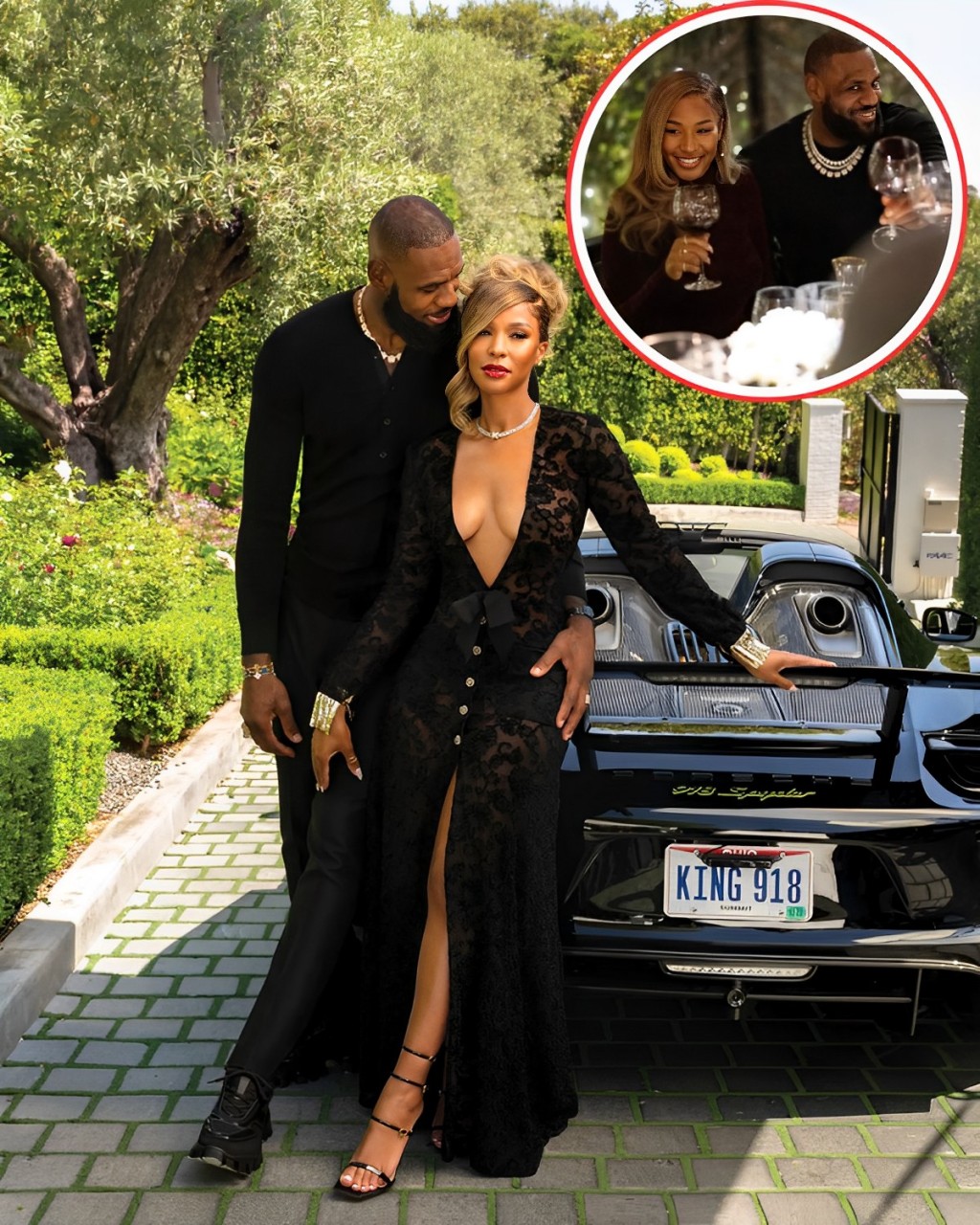In the NBA world, the no-trade clause is among the most coveted pieces in any contract negotiation. In the history of the NBA, there have been just 10 players to receive a no-trade clause in their contract extensions. A no-trade clause gives a player the power to reject any trade he can be a part of. According to the Sporting News, players can only receive a no-trade clause if they have played at least eight seasons in the NBA and at least four seasons with the team they are negotiating a contract with. Only 0.01% of players out of over 5,000 in NBA history have ever received one.
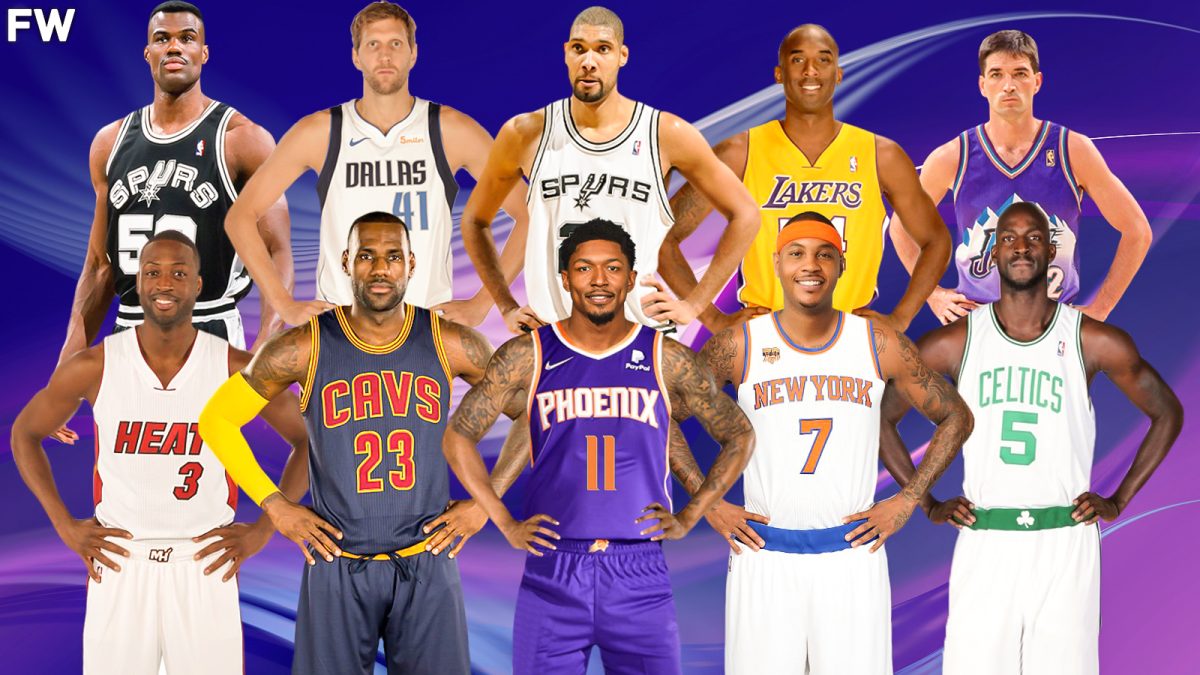
The list of NBA players to actually receive a true no-trade clause is short and filled with NBA legends. That list is as follows:
John Stockton
David Robinson
Kobe Bryant
Tim Duncan
Dirk Nowitzki
Kevin Garnett
Carmelo Anthony
Dwyane Wade
LeBron James
Bradley Beal
In recent days, the topic of the no-trade clause has been front and center due to Bradley Beal waiving his in order to complete his deal to the Phoenix Suns from the Washington Wizards. Beal will also keep his no-trade clause with the Phoenix Suns, meaning if they try to move off him within the next few seasons, Beal will have to approve any trade himself.
Beal will likely be the last player in NBA history with a no-trade clause in his contract. Most teams are unwilling to concede too much power to the players in this regard, especially if a trade is offered that can significantly improve their team for that one specific player. For now, it remains to be seen if another player, such as Victor Wembanyama or Luka Doncic, will earn a no-trade clause in the future; let us talk about the greats who actually did receive one in their careers.
These are the only players in NBA history with no-trade clauses in their contracts.
John Stockton
Credit: RVR Photos-USA TODAY Sports
When John Stockton signed his three-year contract extension in 1996 with the Utah Jazz, he was already a proven star in the NBA entering the final seasons of his career. By that time, Stockton was already a proven point guard with 13 years of experience in the NBA, all with the Utah Jazz. Upon entering these negotiations in 1996, Stockton made just two requests. The most important one was that he wanted to guarantee he could not be traded and finish his career with the Jazz.
The Utah Jazz happily agreed to the deal, and Stockton was made a member of the Jazz family for life. He helped lead the team to two NBA Finals in 1997 and 1998 alongside Karl Malone and ended up breaking both the all-time steals and assists records in NBA history.
Stockton never won an NBA championship with the Jazz but is perhaps the most celebrated figure in franchise history. The fact that he wished to remain in Utah despite their lack of championship success speaks volumes about how much he was valued by the team, and how much he valued them as a place to call home.
David Robinson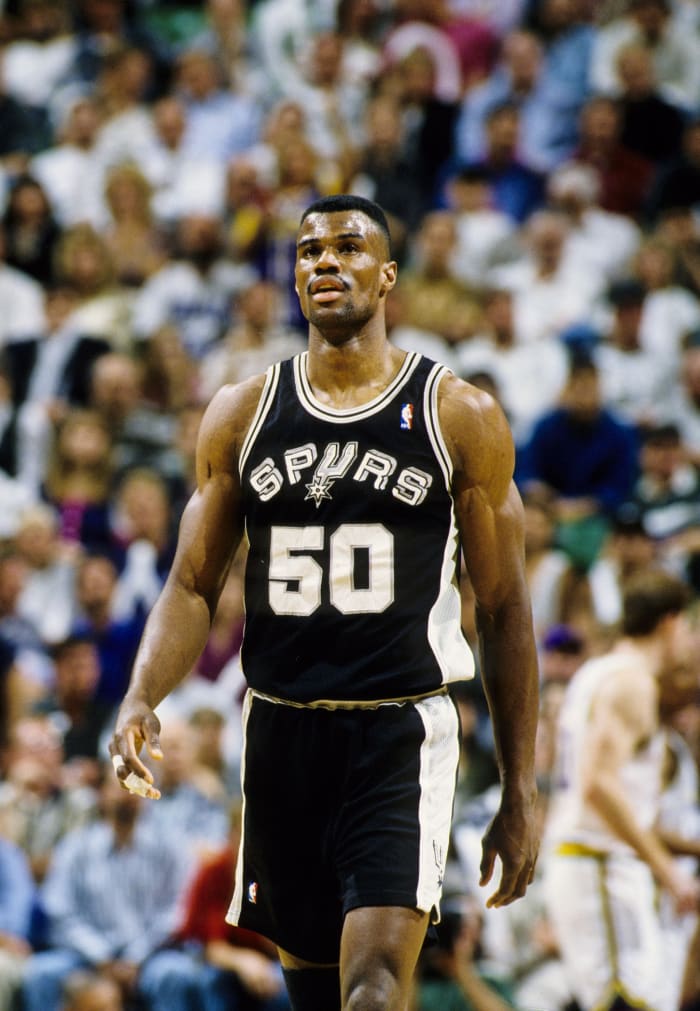
Credit: RVR Photos-USA TODAY Sports
When it comes to his NBA contracts, David Robinson was in full control of them before he had even played in an NBA game. Robinson was the first overall pick by the San Antonio Spurs in 1987 but still had commitments he had to serve out in the United States Navy. With this development, the Spurs and Robinson had a choice. Robinson could enter back into the Navy and become a free agent when his military duties were up, or he could negotiate a contract with the Spurs that allowed him to secure his money and stay in San Antonio.
Robinson obviously chose the latter.
The stipulations were simple. Robinson’s salary was going to be the average between the first and second-highest-paid players in the NBA and a full no-trade clause. This gave Robinson full control over his future and secured financial freedom for the remainder of his career. There were even times that Robinson was the highest-paid player in basketball over the likes of Michael Jordan, Hakeem Olajuwon, and Shaquille O’Neal.
The Spurs never entertained dealing Robinson, so his no-trade clause was never brought to light in any fashion. The Spurs were right to lock up Robinson at an early age. He helped them turn around the franchise as a rookie, improving their win total by 37 games which was an NBA record for years. He went on to win an MVP, Defensive Player of the Year, a scoring title, and eventually two NBA championships with San Antonio in his career as well, and he is widely considered one of the greatest centers in NBA history.
Kobe Bryant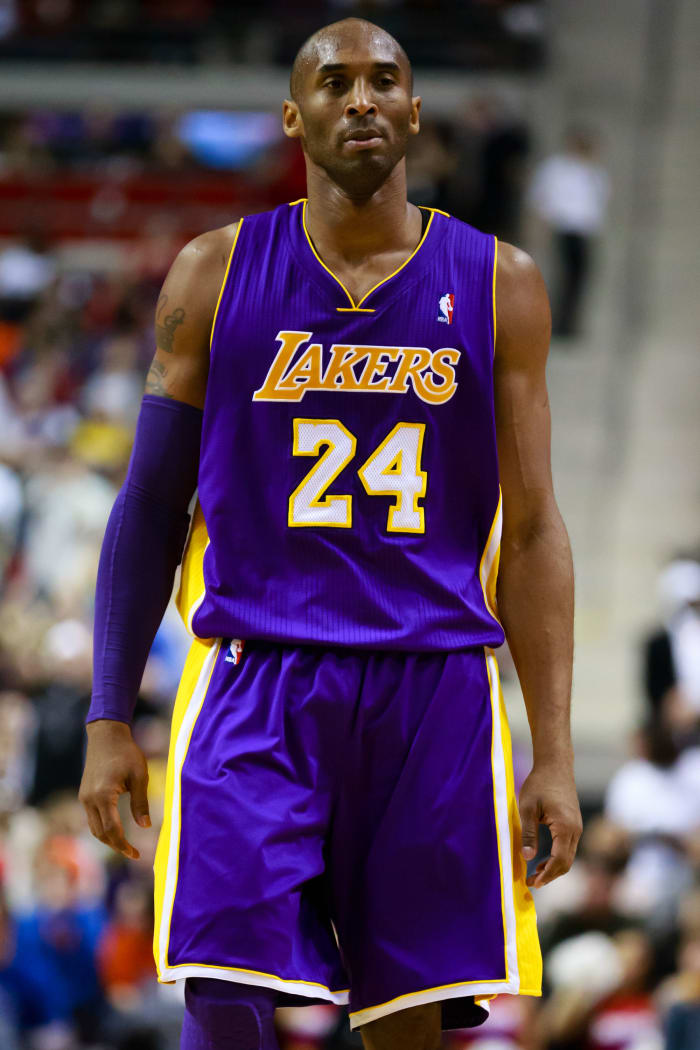
Credit: Rick Osentoski-USA TODAY Sports
As the 2004 NBA season ended, the Detroit Pistons were crowned NBA champions with a victory over the Los Angeles Lakers. The Lakers were coming off their first Finals loss of the Kobe Bryant and Shaquille O’Neal era after three-peating as NBA champions from 2000 thru 2002. This was also around the time that the rift between him and Shaquille O’Neal began to surface as the Lakers tabbed Kobe as the franchise player moving forward.
As the Lakers moved on from Shaq, they experienced some extreme lows as they struggled to put a competent roster around Bryant. Missed playoffs and early exits surrounded the notion that Kobe could not get it done in L.A. without O’Neal and bring his team back to the promised land.
This led to Kobe asking for a trade in 2007 when he had reportedly reached his breaking point with the team. The Lakers were able to get a deal on the table with the Pistons that would have sent Richard Hamilton and Tayshaun Prince, among others, back to Los Angeles. Bryant would use his no-trade clause to veto the trade as he came around to sticking things out with Los Angeles amidst all of the noise.
The rest is history, as Bryant would lead the Lakers to back-to-back NBA championships in 2009 and 2010 after the Lakers went out and acquired Pau Gasol. Bryant would also earn both Finals MVP awards for his performances during those series as well as an MVP award in 2008. Bryant would finish his career with the Lakers and is widely regarded as the greatest player in franchise history.
Thank goodness for that no-trade clause. Kobe Bryant, a Pistons legend, just doesn’t have the same ring to it.
Dirk Nowitzki
Credit: Matthew Emmons-USA TODAY Sports
For 20 seasons, Dirk Nowitzki carried the torch for the Dallas Mavericks in the NBA. He won an MVP award in 2007 and led the team to their first NBA championship in 2011 while navigating one of the toughest paths to the title in recent memory. He set numerous franchise records during his two decades with the team and retired as the franchise’s greatest player ever.
After the 2010 season concluded with another disappointing ending turned in by Nowitzki and the Mavericks, fans were dismayed when Dirk opted out of his player option, speculating that he was ready to move on from the only franchise he had ever known. I remember sobbing uncontrollably as a 20-year-old man because I thought for sure he was gone.
Things got even worse when it was reported that Dirk was contacted by Kobe Bryant to come and join him in Los Angeles for an opportunity at multiple NBA championships. As we know now, Dirk rejected Bryant’s advances and re-signed with the Mavericks, but why opt-out at all? I’ll tell you why.
Because of the rules surrounding a no-trade clause, Nowitzki was not eligible for one unless he was negotiating a new deal with Dallas rather than an extension. This was to ensure that the Mavericks would not dump him off in exchange for younger talent as age and wear and tear became issues later on in his career. Nowitzki wanted to be a Maverick for life, as he stated many times before. The fans and Dirk got their wish.
Fresh off his new deal and knowing he wasn’t going anywhere, Nowitzki went on the now legendary 2011 run that saw Dallas rewarded with their first NBA championship and Nowitzki named Finals MVP. The deal was sealed from that moment on, and discussions were never held about his departure from the team until it was time to retire in 2019.
Tim Duncan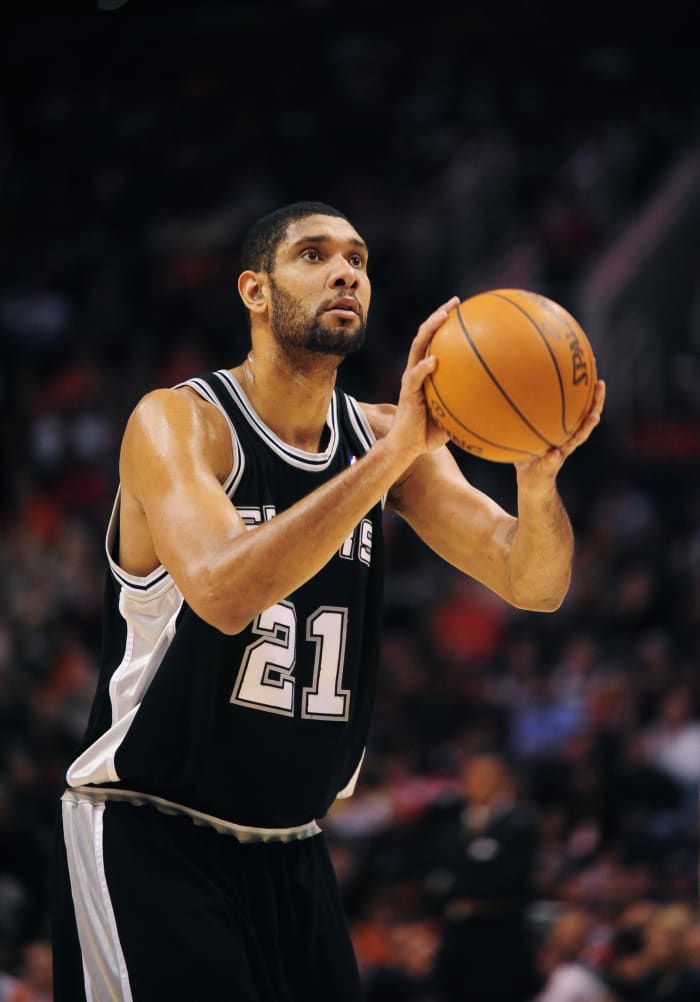
Credit: Mark J. Rebilas-USA TODAY Sports
By the time Tim Duncan was set to renegotiate his deal in San Antonio in 2012, he was already 36 years old and one of the most accomplished players ever. Duncan had led the Spurs to four NBA championships up to this point and was a three-time Finals MVP as well as a two-time MVP in his 14 seasons with the Spurs.
Now, Duncan had flirted with the idea of leaving San Antonio in the early 2000s before but quickly realized that a career in Orlando was nothing compared to the legacy he could build in San Antonio. Well, that and Orlando coach Doc Rivers refusing to allow Duncan’s family to travel with them on team flights.
This negotiation was different because Duncan was entering the final stages of his career but still had some quality basketball left in him. Duncan would ink a 3-year/$36 million contract to stay in San Antonio and be given the no-trade clause to ensure he would remain a member of the Spurs for the remainder of his career.
What followed was consecutive trips to the NBA Finals with a close defeat to the Miami Heat in seven games in 2013 and a fifth NBA championship in 2014. Duncan may not have been the two-way dominant figure he was during the 90s and 2000s, but his leadership and mere presence had a lot to do with their success during these two seasons. Besides, he’s Tim Duncan, of course, you’re going to give him a no-trade clause.
Kevin Garnett
Credit: Rick Osentoski-USA TODAY Sports
Kevin Garnett had spent years with the Minnesota Timberwolves early on in his days in the NBA, hopelessly trying to guide a franchise to an NBA championship that didn’t have the financial means or roster to do so. Eventually, in 2007, Garnett landed in Boston with the Celtics, where he immediately fit in and accomplished his lifelong goal of becoming an NBA champion in his very first season with the team.
Garnett then became a God-like figure in the City of Boston, beloved by fans and the organization to the fullest extent. When it came time to negotiate his new deal in 2012, the Celtics were happy to oblige Garnett with a 3-year/$36 million deal that tied him with Tim Duncan as the highest-paid power forward in the NBA at the time. In the deal, Garnett also demanded a no-trade clause to make sure that, in his words, he “Stayed green for life”.
The Celtics gladly gave Garnett his no-trade clause, which ensured that Boston would remain in contention for the rest of his contract. As the years wore on, Garnett’s no-trade clause began to hurt the franchise as he struggled with injury, and the team desperately wanted to head into a rebuild despite Garnett’s All-Star production in 2012-13.
Finally, in July 2013, Garnett caved and waived his no-trade clause. He was involved in one of the biggest trades of the last 15 years when he, Paul Pierce, Jason Terry, and draft capital were sent to the Brooklyn Nets in exchange for the draft picks that eventually landed Boston the core duo of Jayson Tatum and Jaylen Brown. Garnett had his jersey retired by the Celtics in 2022 and is still one of the most beloved players in Celtics franchise history.
Dwyane Wade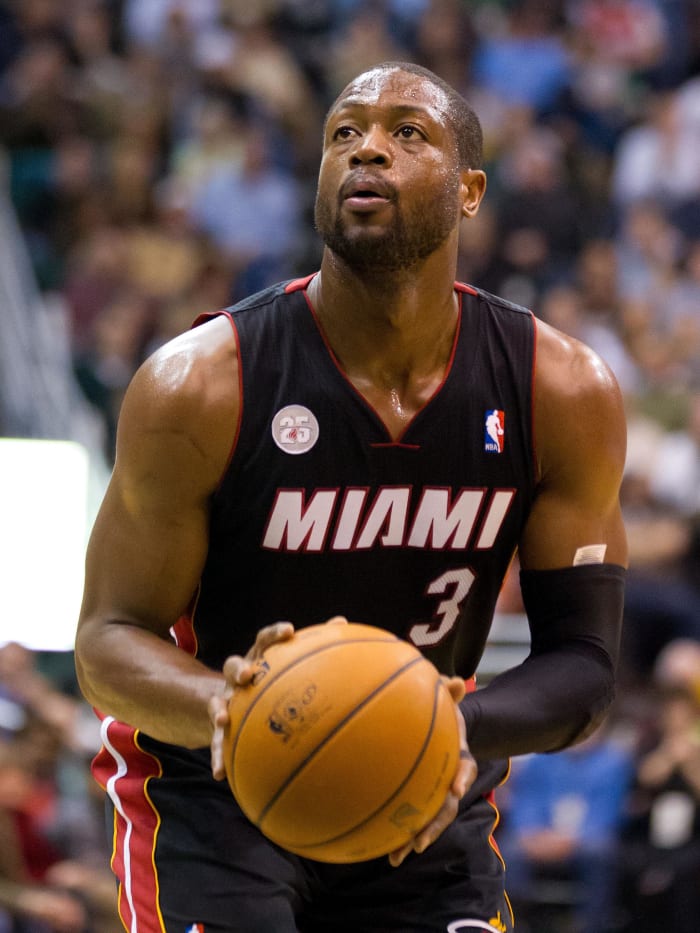
Credit: Russ Isabella-USA TODAY Sports
The 2014 offseason would see two players receive no-trade clauses bringing the total to six players in the NBA at the time with full no-trade clauses in their contracts. The first of these players was Dwyane Wade, who had just come off his fourth straight NBA Finals appearance with the Miami Heat.
A few factors were at play here. Wade had a player option for the 2014-15 season which he decided to opt out of, which would have been worth two years and $42 million. Instead, he would re-sign for two years and $31.1 million with the inclusion of the no-trade clause and a player option for the second year of the deal.
Also, the Heat had just lost LeBron James, who opted to return to Cleveland after a four-year stint in South Beach that saw the team win two NBA championships. With the departure of James, Wade secured his future as the King of Miami, for the short term at least.
Wade would eventually opt into the second year of his deal before becoming an unrestricted free agent and signing with the Bulls in 2017. After short stints with the Bulls and Cavaliers, Wade was traded back to Miami in 2018 and eventually retired in 2019. Wade’s no-trade clause was never needed to veto or approve any deal, but there is something to be said for the way Pat Riley protected him, even with bad knees, toward the end of his career.
Carmelo Anthony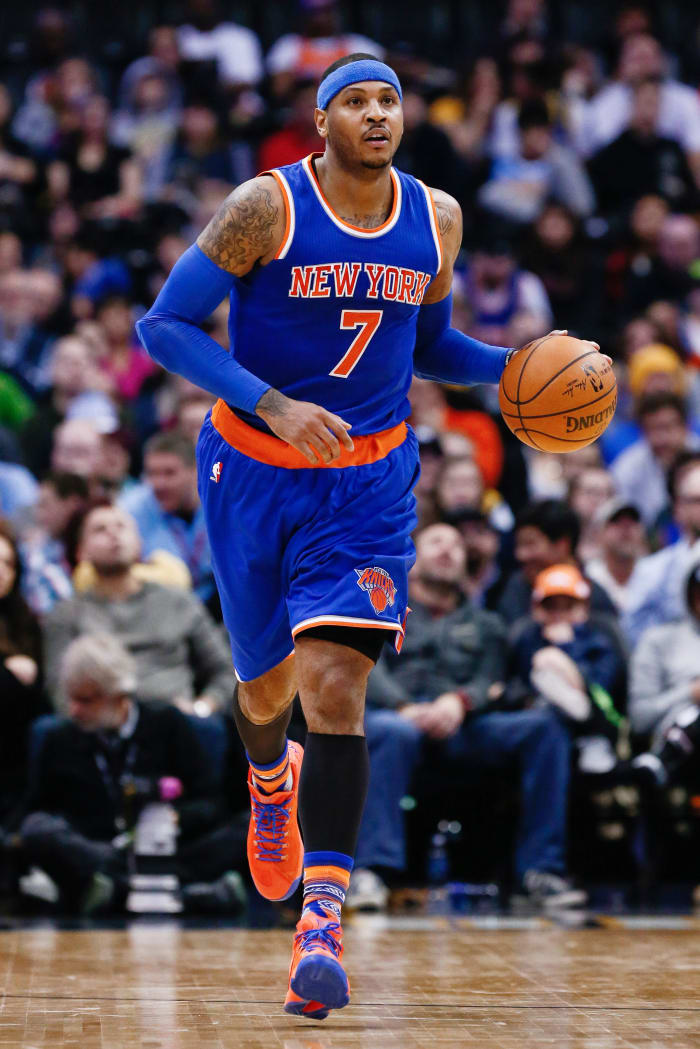
Credit: Isaiah J. Downing-USA TODAY Sports
The other player to receive a no-trade clause in the 2014 offseason was Carmelo Anthony of the New York Knicks. After three-and-a-half seasons with the Knicks, Anthony was eligible for a no-trade clause due to the fact that the 2010-11 season counted towards his four years of service to the New York Knicks despite playing just 27 games with them after being traded from Denver.
First, as an unrestricted free agent, Anthony chose to take meetings with both the Lakers and Bulls to hear their pitch as to why he should leave New York and join their pursuit of an NBA title. Instead, Phil Jackson made the decision to not only give Carmelo a max deal worth $124 million over five years, but a no-trade clause to sweeten the deal, and he returned to the Knicks.
By 2017, the third year of Anthony’s deal, Jackson would become determined to trade Anthony and rebuild around their young star, Kristaps Porzingis. Rumors quickly erupted as they often do in New York, but nothing would come to fruition despite teams like the Rockets, Celtics, and Cavaliers being on Anthony’s wish list of destinations.
Finally, in September 2017, Carmelo waived his no-trade clause to join the Oklahoma City Thunder joining Russell Westbrook and Paul George to form a “Big 3” of sorts. That one season with the Thunder came with 16.2 PPG from Carmelo, a fourth-place finish in the Western Conference, and a first-round exit in the playoffs at the hands of Damian Lillard and the Portland Trail Blazers. The Thunder would trade Anthony that offseason as well to Houston where he played in just 10 games.
Anthony last played in 2021-22 for the Los Angeles Lakers and recently announced his retirement from the game completely earlier this summer.
LeBron James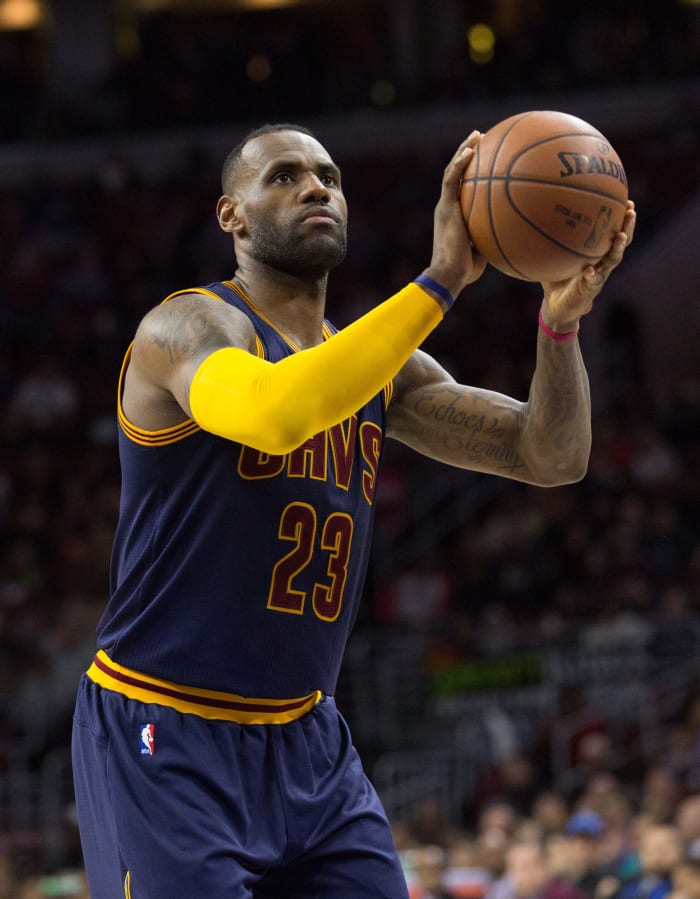
Credit: Bill Streicher-USA TODAY Sports
A player like LeBron James comes around once, maybe twice, in a lifetime. He has delivered NBA championships to every NBA franchise he has ever played for. Holds some unbreakable records throughout NBA history, including, but not limited to, the NBA Finals. He is simply one of the greatest players in NBA history.
In 2016, LeBron James led the Cavaliers to their first NBA championship in NBA history, completing a 3-1 comeback over the Golden State Warriors in one of the biggest upsets in NBA playoff history. After the season was through and the celebration had subsided, it was right back to business for James. He inked a three-year, $100 million deal with Cleveland that included the first no-trade clause of his career.
This is where James deserves a ton of credit. After another loss in the 2017 Finals, teammate Kyrie Irving requested out of Cleveland, citing James and being second to him as one of his issues. Instead of following suit, James decided to stick it out with the Cavaliers and never waive his no-trade clause.
James would, however, opt out of the final year of his deal in Cleveland in July 2018, becoming an unrestricted free agent. James decided to leave the Cavaliers once again but this time for the Lakers and under much better circumstances. James would lead the Lakers to the 2020 NBA championship, becoming a four-time Finals MVP with his third different franchise.
He remains signed with the Lakers through 2023-24 with a player option for 2024-25 worth north of $57 million. Of course, his future all depends on where his son, Bronny James, ends up going after he is finished with his time at USC.
Bradley Beal 
Credit: Fadeaway World
As we have already discussed earlier, the 10th and final player in NBA history to receive a no-trade clause is Bradley Beal. Just last offseason, the Wizards locked in Beal for five years and $251 million, sweetening the deal with the NBA’s only full no-trade clause.
For years, the rumors have been swirling about Beal and him being traded despite the public outcries that he intended to remain loyal. As the 2022-23 season unfolded, it became clear that Washington and Beal had a big decision to make regarding the shooting guard’s future. In the event of a full rebuild, Beal wished to take his talents elsewhere. If the Wizards intended to compete, then he would stick it out for at least one more season.
On Sunday, we all got our answer as Beal waived his no-trade clause in a deal between the Phoenix Suns and Washington Wizards that sent Beal to the desert and Chris Paul, Landry Shamet, and second-round draft picks. With three seasons left on his deal and a player option for 2026-27, Beal teams up with Kevin Durant and Devin Booker to form the league’s new superteam hoping to win Phoenix’s first NBA championship ever.
It is important to note that even though Beal waived his no-trade clause to go to Phoenix, he still keeps the clause for the remainder of his contract. The only way Phoenix can rid itself of the no-trade clause is to renegotiate the terms of his deal or wait until he becomes a free agent and wants a new deal.
The results remain to be seen from this Beal trade and the ripple effects it has on the NBA, but seeing how difficult it can become for a franchise to move off these no-trade clauses, I expect no more to be handed out in my lifetime.
